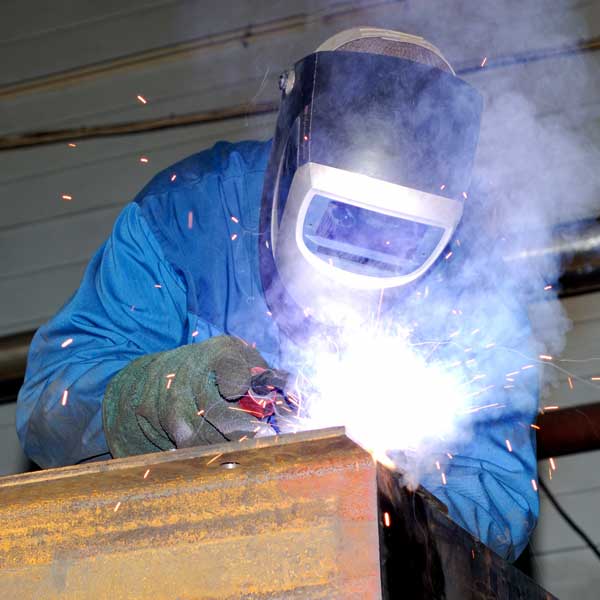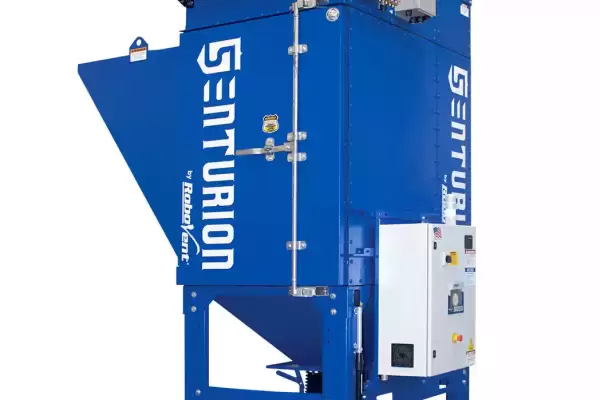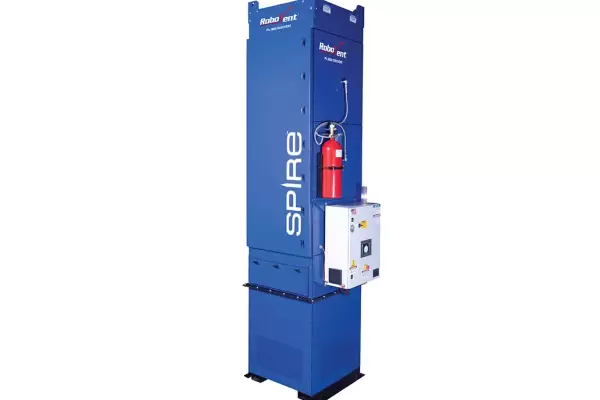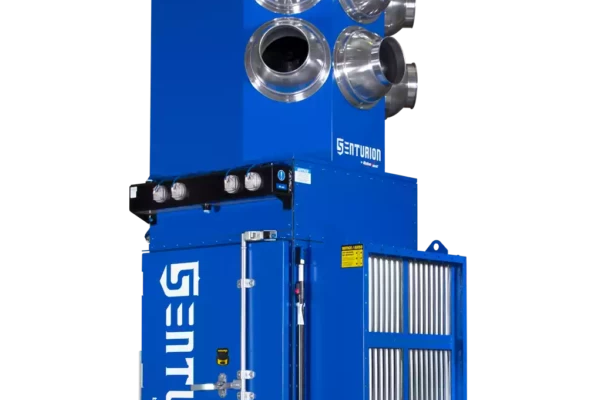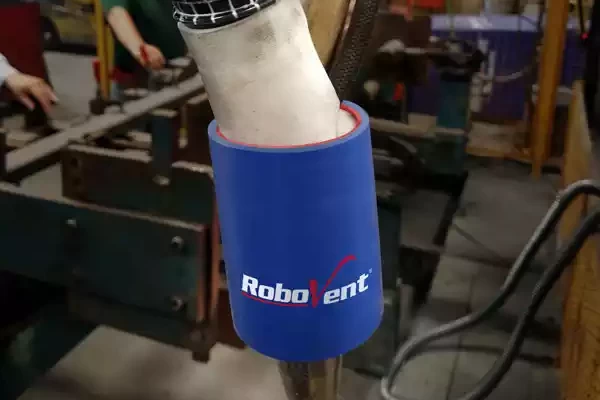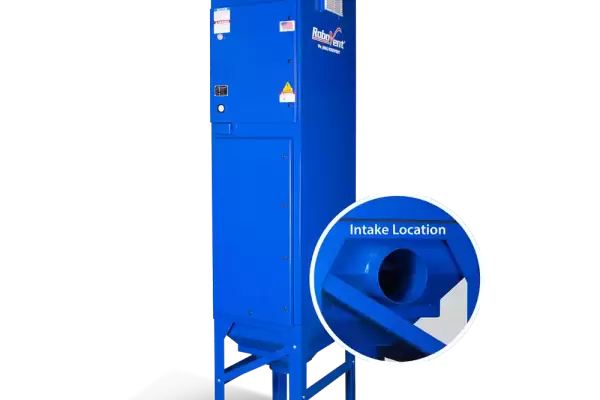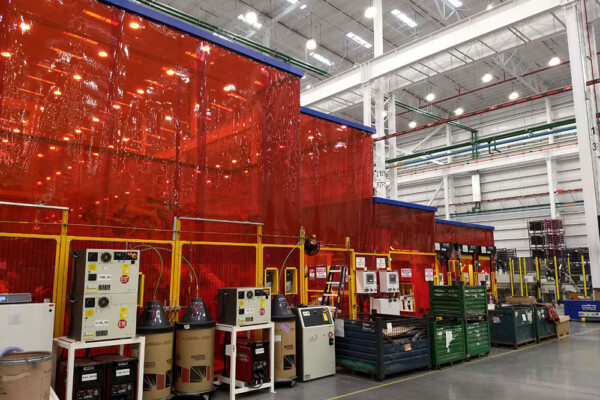 EXPOSURE RISKS FOR WELDING FUMES
EXPOSURE RISKS FOR WELDING FUMES
Weld fumes are a particularly dangerous inhalation risk because of their small particulate sizes. The intense heat created by a welding arc turns welding wire and small amounts of base metal into extremely small particulates, roughly 0.1 to 0.5 microns across. For comparison, a human hair is 100 microns across. The smaller the particulate, the easier it moves through the lungs and into the bloodstream. Some of these metal particulates are smaller than viruses. If these particulates are toxic metals—which they often are—the health implications are very serious.
Metallic particulates such as hexavalent chromium, manganese and beryllium are some of the greatest dangers to welders and other people in metalworking plants. Hexavelent chromium is most commonly produced when welding stainless steel. The chromium present in stainless steel is turned into chromium with a valence of +6 and is often written Cr(VI). This substance is highly toxic and a known carcinogen with a well proven connection to cases of cancer.
Another example of a major health hazard is the presence of manganese in weld fumes. Excessive exposure to this toxic substance can cause a condition known as Manganism. This condition is a neurological disorder whose symptoms resemble Parkinson’s Disease.
Exposure to weld fumes carries general risks, as well. The most common of these are eye, nose, and throat irritation, as well as dizziness and nausea. Also documented is suffering from lung damage, stomach ulcers, kidney damage and a condition known as “metal fume fever.” Documented connections with cancer include lung, larynx and urinary tract cancers.
 REGULATIONS FOR WELDING FUMES
REGULATIONS FOR WELDING FUMES
The Occupational Safety and Health Administration (OSHA) is the primary agency regulating weld fumes and air quality in manufacturing plants. The agency addresses metallic particulates in weld fumes, specifically. For example, OSHA has specific regulations for hexavalent chromium—29 CFR 1910.1026 and 1926.1126.
One of OSHA’s jobs is to set “permissible exposure limits” (PEL’s). These are specific measurements of how much of a substance a worker can be exposed to over an 8-hour shift (using a time-weighted average). Here is a list of a few sample PEL’s:
- Cadmium: 0.005 mg/m3
- Hexavalent chromium: 0.005 mg/m3
- Lead: 0.05 mg/m3
- Nickel: 1.0 mg/m3
- Manganese: 5.0 mg/m3
The first step in complying with OSHA regulations is to assess your air quality. This is done through an audit done by an industrial hygienist, preferably by one certified by the American Conference of Governmental Industrial Hygienists. These professionals set up monitors throughout a facility to measure air quality. Some of these monitors are placed on employees’ uniforms, often on the collar, in order to test air in the breathing zone. Data are collected over an eight-hour period, after which, the monitors’ filters are sealed and sent away for study. Analysis of the filters reveals the particulates present in the facility and can be broken down by location on the shop floor. More importantly, specific particulates can be identified, letting the employer know what regulated substances are traveling through the facility and at what exposure levels.
Complying with OSHA regulations is important for any business. Citations for violations can carry significant fines, even reaching into the hundreds of thousands of dollars. Violations can cause other legal liabilities, as well, as well as cause reputational harm. Most importantly, however, complying with regulations is a good way to ensure that an employer is protecting the health of its employees.
MORE DUST TYPES
SOLUTIONS FOR WELDING FUMES
RoboVent has a well honed expertise in mitigating weld fumes. For over 25 years, RoboVent has designed and implemented air filtration solutions to protect workers and ensure manufacturers are complying with regulations. Systems like the Senturion Series feature low operating costs, superior fire safety and easy maintenance. If a facility has many welding stations, the Senturion collectors can be arranged in a Grid configuration.
RoboVent offers solutions for robotic welding stations, as well. For example, the Streamline Hood is designed to enclose these welding cells in order to contain and efficiently filter fumes. Recent advances have made the hood slimmer and more efficient, taking up less space while delivering major benefits. As with previous models, the hood can accommodate single or multiple robotic systems in a variety of configurations. Once contained, fumes are sent through high-efficiency Endurex filters, removing airborne contaminants and returning cleaner air to the plant. Built-in spark arrestance is incorporated for an exceptional degree of fire suppression.
Whatever welding operation you have, RoboVent has a solution for you. If your needs are simple and straightforward, we have many options ready to install. If your situation is more complex, RoboVent's VentMapping process identifies the problem, models your facility's air flow and allows our engineers to propose the ideal solution.
Welding Fumes Collection Collectors
Clean Air Technology Services
CONTACT US
Contact one of our industrial dust experts to gain the advantage against dust-generating processes and applications.


